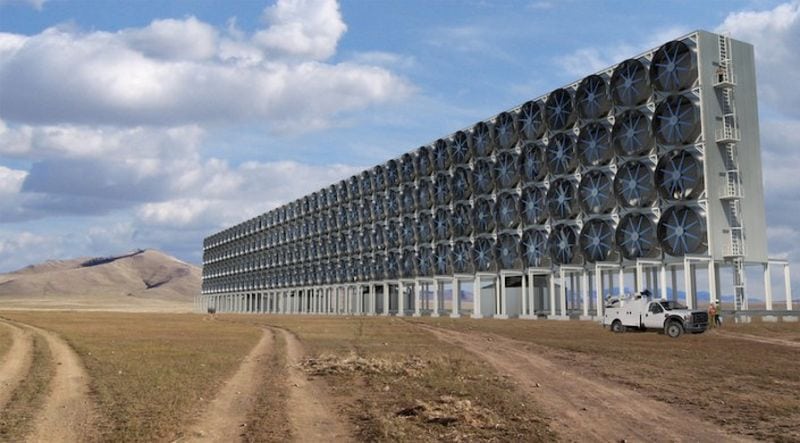Removing carbon from the environment is one of the ways to limit global warming to 2 degrees Celsius. Most countries all over the world have committed themselves to doing that. It has to be a concerted effort on the part of governments, industries, and ordinary people to reduce emissions. Some researchers feel that we have to be more proactive about removing carbon from the air. They have worked on some carbon-removal technologies which seem to be quite effective. One of them is already open on a commercial basis, though on a very small scale. Let’s find out more about this and other interesting developments:
Latest carbon-removal technologies to remove carbon from the environment
 Relying on non-use of toxic carbon emitting products might work, might not. Unless carbon is removed by using some new technology, we will be devastated by the changes in climate brought about by global warming. Scientists have worked out how to remove carbon from the atmosphere. Currently, the world produces 41 billion tons carbon dioxide (CO2) every year. If this continues, then the Paris Accord’s decision to bring down the Earth’s temperature will be a far cry.
Relying on non-use of toxic carbon emitting products might work, might not. Unless carbon is removed by using some new technology, we will be devastated by the changes in climate brought about by global warming. Scientists have worked out how to remove carbon from the atmosphere. Currently, the world produces 41 billion tons carbon dioxide (CO2) every year. If this continues, then the Paris Accord’s decision to bring down the Earth’s temperature will be a far cry.
Forgreenhouse gases removal, gases like carbon must be physically removed by using carbon-removal technologies.20 million tonnes of carbon has to be removed using the latest technologies for carbon removal for an indefinite period.
Some of the methods for carbon-removal technologies are:
Direct Air Capture
Right now, this method is being deemed as one of the best ways to eliminate CO2 from the planet’s atmosphere. By this process, enough carbon can be removed to bring down the temperature of the Earth. In this method, air is pumped though a system which after removing carbon, stores it. The carbon is turned chemically into a useful or inert substance.
So how to remove carbon from the atmosphere–researchers have developed certain systems which work by passing the air through anion-exchange resin. These resins contain carbonate and hydroxide groups which can absorb CO2 when dry. When moist, they release CO2. The carbon which is extracted can be compressed and stored in a liquid form underground, using latest technologies for carbon removal.
The challenge is the cost – right now it costs $100 per ton to extract carbon. This cost should come down to $40 per ton to make carbon extraction feasible monetarily.
Climeworks showing the way
There are three companies which have set up pilot plants to extract carbon – Carbon Engineering (Canada), Global Thermostat (US), Climeworks (Switzerland).
Climeworks is the company which has been working on the process for quite some time. They started with one small pant which used absorbed carbon as plant food in a greenhouse. Now, they have opened a commercial plant, located in Iceland. It aims to remove 1000 tons CO2 from the air every year. This is equivalent to the carbon released by 200 cars.
The extracted gas will be pumped into underground basalt rocks. This will be done using the geothermal energy which is abundant in Iceland.The carbon-removal technologiesof Climeworks ensure that the gas is converted into stone. This means the CO2will be out of the Earth’s atmosphere for a few million years. This has been considered to be an enormous breakthrough in getting carbon out of the air.
The firm says that it is only a very small percent of carbon that is trapped in large plants producing fossil fuel. According to the company, it would have to establish 250,000 plants to achieve its goal of removing 1 percent of global CO2 emissions.
Reforestation and other technologies
 Reforestation is a natural method to trap carbon from the atmosphere. Along with the increase in cars, industries, and decreasing forest cover, natural carbon management has decreased. To get the natural balance back, reforestation is required. This is not a new technology, but it has to be implemented for the environment to benefit in many ways.
Reforestation is a natural method to trap carbon from the atmosphere. Along with the increase in cars, industries, and decreasing forest cover, natural carbon management has decreased. To get the natural balance back, reforestation is required. This is not a new technology, but it has to be implemented for the environment to benefit in many ways.
Increasing the green cover can be done in many ways – such as vertical gardens in urban areas, rooftop gardens, etc.
Bioenergy is another of the latest carbon-removal technologies. In this method, the CO2 which is produced from biomass energy is stored underground.
NET Power’s novel approach
In Houston, which is the center of oil industry in the States, a company called NET Power has introduced an innovation which is groundbreaking. They have used an approach called the ALLAM cycle. In their plant, natural gas is burnt to produce energy, but the difference is that instead of releasing carbon, the process captures carbon. This novel concept, thus, is a total revelation. It is actually a completely renewable energy derived from fossil fuel. NET Power is therefore one of the originators of carbon-removal technologies which might become quite popular in the future.
Theoretically, carbon can be removed by cooling it and liquefying it. This might mean setting up plants in the polar plateaus of Greenland and Antarctica.
Why are greenhouse gases removal strategies important?
 Image Source : seas.harvard.edu/
Image Source : seas.harvard.edu/
There are pros and cons to everything, and the same goes for carbon removal. Some people argue that removal strategies will discourage people from reducing their carbon footprint. Especially in the west, when so many comforts and conveniences depend on fossil fuels. While enjoying the comforts, there is hardly a thought about climate change or global warming. Though this is changing, it will be many years before ordinary people can make a difference.
In order to meet the global target of lowering the planet’s temperature, carbon has to be removed using modern technologies, along with reforestation. In order to give a fair future to our children, the ‘factories’ to remove CO2 have to be set up. Another drawback which experts are foreseeing, is that if a huge number of carbon removal units are set up, then it might take up to 8 percent of the Earth’s total land.
Relying on carbon removal plants is not the answer, if mankind keeps behaving in the same way as it always has. The only way to reduce carbon from the environment is to reduce the emissions – from cars, industries, etc. Cleaning up is necessary, but so also is producing less material i.e. carbon, to be cleaned up.

